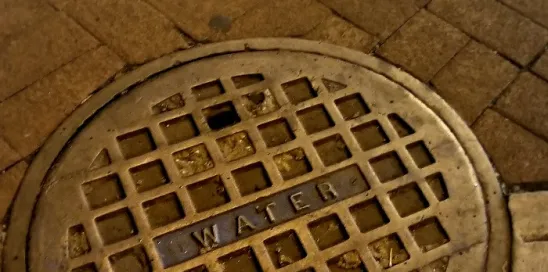The U.S. Environmental Protection Agency (EPA) is soliciting comments on a draft guidance document on approaches to issuing National Pollutant Discharge Elimination System (NPDES) permits for communities that have completed their long-term control plans (LTCPs) to reduce or eliminate combined sewer overflows (CSOs). To readers familiar with CSO issues, the guidance reads as a series of half measures while also signaling that EPA plans to continue improperly asserting authority over basement backups and urban flooding in combined sewer communities. Interested communities would be well served to submit comments, due no later than March 21, 2024.
1. What problem does the guidance seek to address?
The draft guidance is intended to resolve the critical problem of requiring communities that have already expended billions of dollars on CSO control projects to devote more of their capital budgets to CSO controls after completing their LTCPs. A substantial number of communities are close to completing the CSOs projects required by their LTCPs. Those projects have resulted in enormous CSO reductions, but some of them might not cause water quality standards to be met. In those cases, communities would need to invest in more CSO controls, which are unlikely to be cost-effective. Having already achieved enormous CSO reductions, these communities will find no more “low-hanging fruit”; they will likely be chasing marginal CSO reductions at high costs.
These high costs would come at a time when communities cannot afford them. Most CSO communities are already struggling to keep their rates affordable while also tackling aging infrastructure, adapting to a changing climate, and tackling other pressing water quality issues (e.g., nutrients). The guidance purports to address how NPDES permits might provide post-LTCP communities alternatives to making capital investments to chase increasingly marginal water quality gains.
2. How does the guidance propose to alter EPA’s permitting approach for post-LTCP communities?
Rather than propose any new permitting approach, the guidance leans heavily on two existing mechanisms that may not offer communities much relief when water quality standards are not being met. First, the guidance suggests that CSO communities may wish to change applicable water quality standards through variances or use changes. Although these changes would provide communities relief, states have historically granted few variances and use changes for CSOs, and EPA has not encouraged states to use these tools to assist CSO communities.
Second, the guidance suggests that communities could engage in integrated planning to prioritize more cost-effective pollution control projects over additional CSO controls. This option offers mostly illusory relief. Integrated plans can be used to secure compliance schedules that last longer than a single permit term only in states that have modified their water quality standards to allow longer schedules. Very few states have taken this action, making integrated planning an option for only a small number of communities with combined sewers.
3. Are there topics that EPA failed to address?
There are several, but two stand out. First, the guidance addresses permitting approaches to use when CSO controls do not attain water quality standards but fails to define how EPA will assess attainment. CSO controls must designed and assessed using a “typical year” or long-term averages, but water quality standards use a variety of timeframes to define attainment (e.g., daily maximums or monthly averages). EPA makes no attempt to reconcile or explain this disconnect, leaving unanswered a critical question that could determine whether municipalities must invest more ratepayer funds in CSO controls.
Second, the guidance fails to address how EPA and state permitting practices make it difficult to evaluate CSO communities’ compliance. Specifically, NPDES permits for CSOs routinely contain generic prohibitions against violating water quality standards. These prohibitions inherently obscure what levels of CSO control communities must achieve and expose communities to enforcement actions that can usurp the permitting process.
4. Does the guidance pave any new ground?
It does in several ways, some of which should raise concerns for municipalities. On the one hand, the guidance emphasizes incorporating equity and environmental justice considerations in future CSO control planning. EPA similarly recommends that planning efforts account for a changing climate and build additional resiliency into combined sewer systems. These areas of emphasis have taken on greater importance in recent years and have been priorities for EPA under Administrator Michael Regan.
On the other hand, the guidance improperly suggests that basement backups and flooding in areas served by combined sewers are subjects that EPA may regulate under the Clean Water Act. The guidance’s discussions of equity and climate resiliency both describe basement backups and flooding as topics for permit-issuing authorities to consider when they assess CSO control programs. Basement backups and flooding, however, may not be lawfully regulated under the Clean Water Act because they do not involve jurisdictional discharges. EPA’s inclusion of these issues in this major guidance document suggests that the agency is seeking to assert authority over issues that are properly subject to state and local jurisdictions.






 />i
/>i

